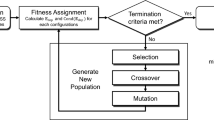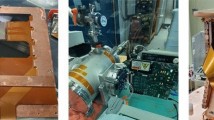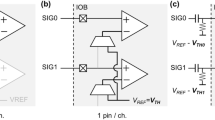Abstract
The monitors used to measure radon concentration must be calibrated, and the calibration factor of each measurement cycle should be determined. Thus, the determination time of calibration factors of NRL-II radon monitors should be reduced. In this study, a method is proposed to determine the calibration factors of radon monitors rapidly. In the proposed method, the calibration factor is initially determined in the 60-min measurement cycle; the calibration factor is then identified in the other measurement cycle on the basis of the principle that the calibration factor of the same radon monitor in different measurement cycles is inversely proportional to the number of α particles produced by 218Po decay in this cycle. Results demonstrate that the calculated calibration factor of the different measurement cycles is consistent with the experimental calibration factor. Therefore, this method is reliable and can be used to determine the calibration factor of radon monitors rapidly.


Similar content being viewed by others
References
World Health Organization, WHO handbook on indoor radon: a public health perspective (World Health Organization, 2009). http://www.nrsb.org/pdf/WHO%20Radon%20Handbook.pdf
S.D. Chambers, F. Wang, A.G. Williams et al., Quantifying the influences of atmospheric stability on air pollution in Lanzhou, China, using a radon-based stability monitor. Atmos. Environ. 107, 233–243 (2015). doi:10.1016/j.atmosenv.2015.02.016
F. Lamonaca, V. Nastro, A. Nastro et al., Monitoring of indoor radon pollution. Measurement 47, 228–233 (2014). doi:10.1016/j.measurement.2013.08.058
D.E. Tchorz-Trzeciakiewicz, T. Parkitny, Radon as a tracer of daily, seasonal and spatial air movements in the Underground Tourist Route “Coal Mine”(SW Poland). J. Environ. Radioact. 149, 90–98 (2015). doi:10.1016/j.jenvrad.2015.07.006
G. De Simone, G. Galli, C. Lucchetti et al., Using natural radon as a tracer of gasoline contamination. Procedia Earth Planet. Sci. 13, 104–107 (2015). doi:10.1016/j.proeps.2015.07.025
T. Kuo, F. Tsunomori, Estimation of fracture porosity using radon as a tracer. J. Pet. Sci. Eng. 122, 700–704 (2014). doi:10.1016/j.petrol.2014.09.012
C. Loisy, A. Cerepi, Radon-222 as a tracer of water–air dynamics in the unsaturated zone of a geological carbonate formation: example of an underground quarry (Oligocene Aquitain limestone, France). Chem. Geol. 296, 39–49 (2012). doi:10.1016/j.chemgeo.2011.12.010
Q. Ye, R.P. Singh, A. He et al., Characteristic behavior of water radon associated with Wenchuan and Lushan earthquakes along Longmenshan fault. Radiat. Meas. 76, 44–53 (2015). doi:10.1016/j.radmeas.2015.04.001
F. Külahcı, M. İnceöz, M. Doğru et al., Artificial neural network model for earthquake prediction with radon monitoring. Appl. Radiat. Isot. 67(1), 212–219 (2009). doi:10.1016/j.apradiso.2008.08.003
E. Florido, F. Martínez-Álvarez, A. Morales-Esteban et al., Detecting precursory patterns to enhance earthquake prediction in Chile. Comput. Geosci. 76, 112–120 (2015). doi:10.1016/j.cageo.2014.12.002
A. Pasculli, S. Palermi, A. Sarra et al., A modelling methodology for the analysis of radon potential based on environmental geology and geographically weighted regression. Environ. Model. Softw. 54, 165–181 (2014). doi:10.1016/j.envsoft.2014.01.006
J. Elío, M.F. Ortega, B. Nisi et al., Evaluation of the applicability of four different radon measurement techniques for monitoring CO 2 storage sites. Int. J. Greenh. Gas Control 41, 1–10 (2015). doi:10.1016/j.ijggc.2015.06.021
Y. Tan, D. Xiao, A novel algorithm for quick and continuous tracing the change of radon concentration in environment. Rev. Sci. Instrum. 82(4), 043503 (2011). doi:10.1063/1.3572271
Y. Takeuchi, K. Okumura, T. Kajita et al., Development of high sensitivity radon detectors. Nucl. Instrum. Methods Phys. Res. A 421(1), 334–341 (1999). doi:10.1016/S0168-9002(98)01204-2
A. Vargas, X. Ortega, J.L.M. Matarranz, Traceability of radon-222 activity concentration in the radon chamber at the technical university of Catalonia (Spain). Nucl. Instrum. Methods Phys. Res. A 526(3), 501–509 (2004). doi:10.1016/j.nima.2004.02.022
L.I. Zhe, T.U.O. Xianguo, S.H.I. Rui et al., Analytic fitting and simulation methods for characteristic X-ray peaks from Si-PIN detector. Nucl. Sci. Tech. 24(6), 060206 (2013). doi:10.13538/j.1001-8042/nst.2013.06.007
W. Fang-Fang, Z. Ze-Ran, Y. Yong-Liang et al., Calibration method for electrode gains in an axially symmetric stripline BPM. Nucl. Sci. Tech. (2014). doi:10.13538/j.1001-8042/nst.25.050102
A. Sorimachi, H. Takahashi, S. Tokonami, Influence of the presence of humidity, ambient aerosols and thoron on the detection responses of electret radon monitors. Radiat. Meas. 44(1), 111–115 (2009). doi:10.1016/j.radmeas.2008.10.009
P. De Felice, X. Myteberi, The 222 Rn reference measurement system developed at ENEA. Nucl. Instrum. Methods Phys. Res. A 369(2), 445–451 (1996). doi:10.1016/S0168-9002(96)80028-3
Acknowledgments
This study was supported by the National Natural Science Foundation of China (Grant Nos. 11475082, 11375083, and 11275096).
Author information
Authors and Affiliations
Corresponding author
Rights and permissions
About this article
Cite this article
Li, ZQ., Xiao, DT., Zhao, GZ. et al. Rapid determination of radon monitor’s calibration factors. NUCL SCI TECH 27, 116 (2016). https://doi.org/10.1007/s41365-016-0118-2
Received:
Revised:
Accepted:
Published:
DOI: https://doi.org/10.1007/s41365-016-0118-2




